It has been widely reported that Australians have suffered one of the largest declines in real per capita household disposable income in the advanced world.
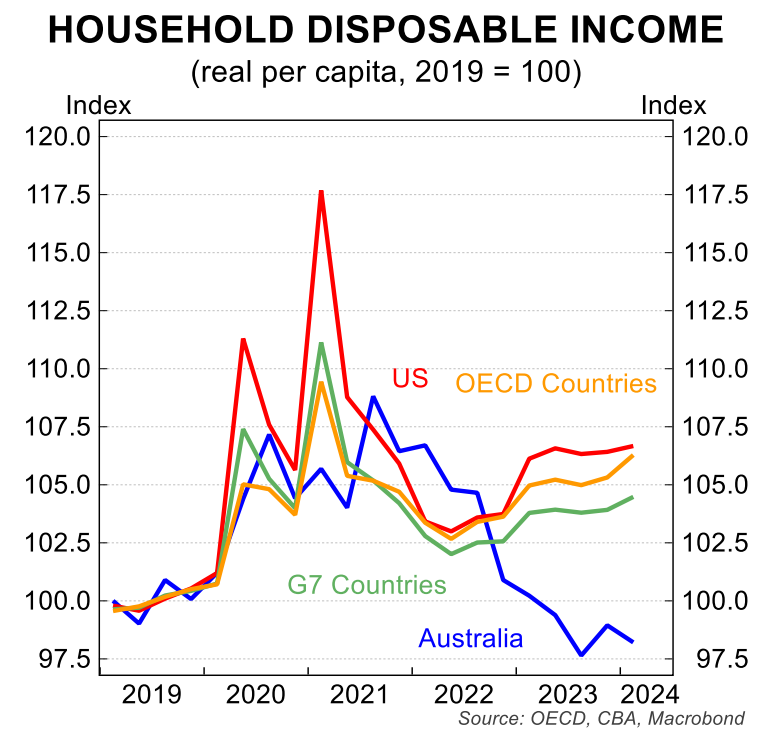
The February Statement of Monetary Policy (SoMP) from the Reserve Bank of Australia (RBA) contained an analysis of the household income recession, noting that Australia has experienced “among the weakest periods of real income growth since the 1960s”.
The RBA shows that real per capita household disposable incomes are about 1% lower than prior to the pandemic:
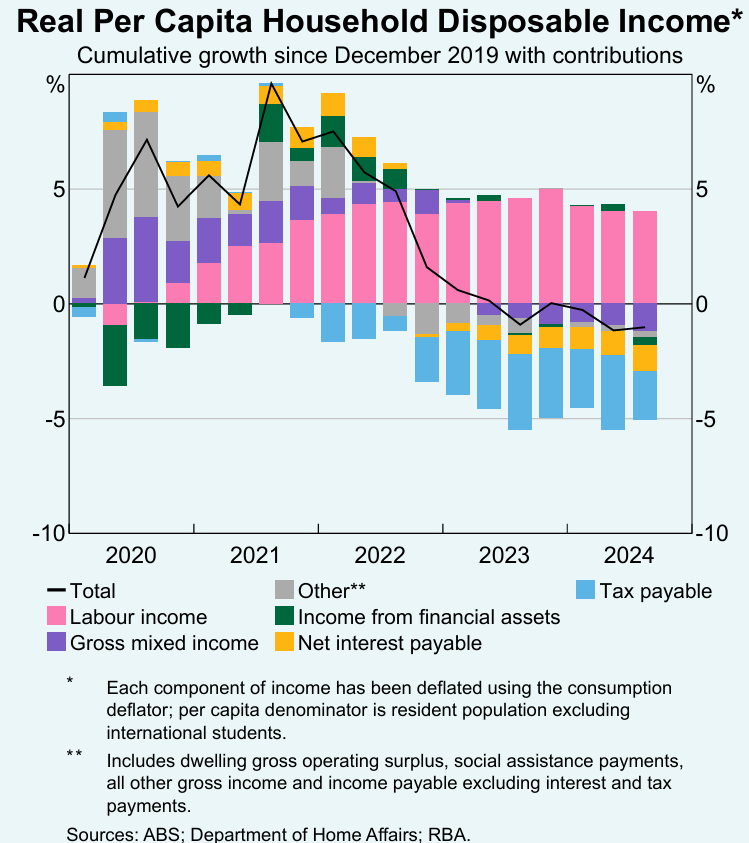
The RBA notes that the main drags on real household income have come from “higher interest rates, lower gross mixed income (mainly small business income) and tax”, which have “reduced disposable income by 5 percentage points since December 2019”.
This decline in real per capita household disposable income has dragged household consumption lower.
“The current data suggest the consecutive declines in per capita consumption started from mid-2023 and accelerated through 2024. By contrast, data available at the time of the February 2024 Statement suggested per capita consumption started to decline earlier, in late 2022”.
The gross savings ratio was also revised downward, indicating that households were reducing saving to smooth their consumption through 2023 to a greater extent than previously apparent. The savings ratio in 2024 was a little higher than what was expected a year ago”.
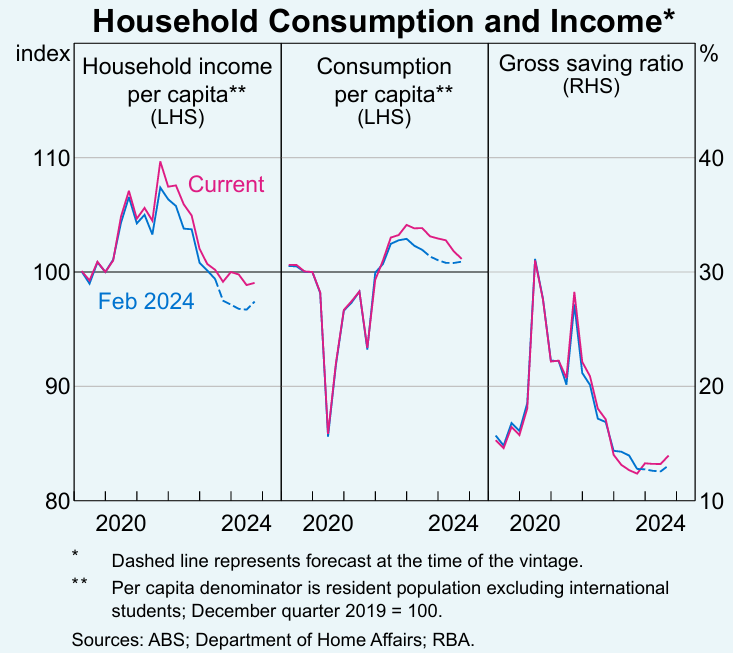
The reality is that the cost of living crisis, which has turned voters away from Labor, has been primarily caused by the decline in real household disposable income.
After peaking in mid-2022, just as Labor came to office, Australian real per capita household disposable income has collapsed by around 8%—the largest decline in recorded history.
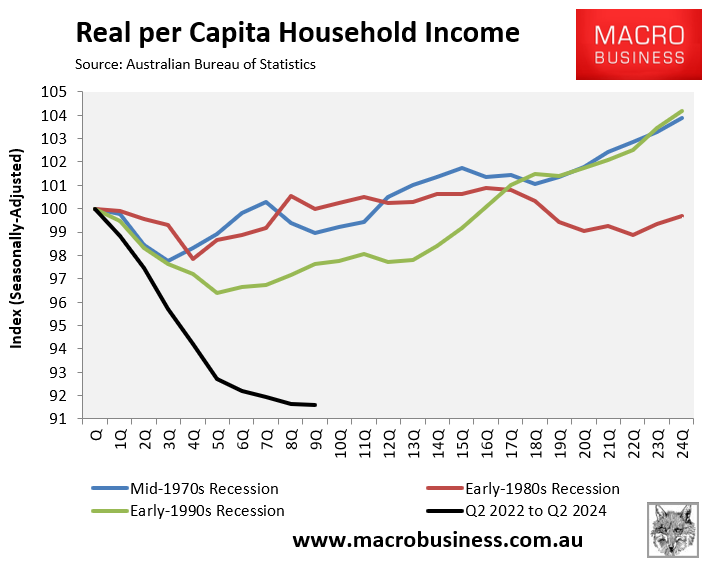
This decline has happened under the Albanese government’s watch. And the latest JWS Research polling suggests that voters are punishing Labor accordingly.
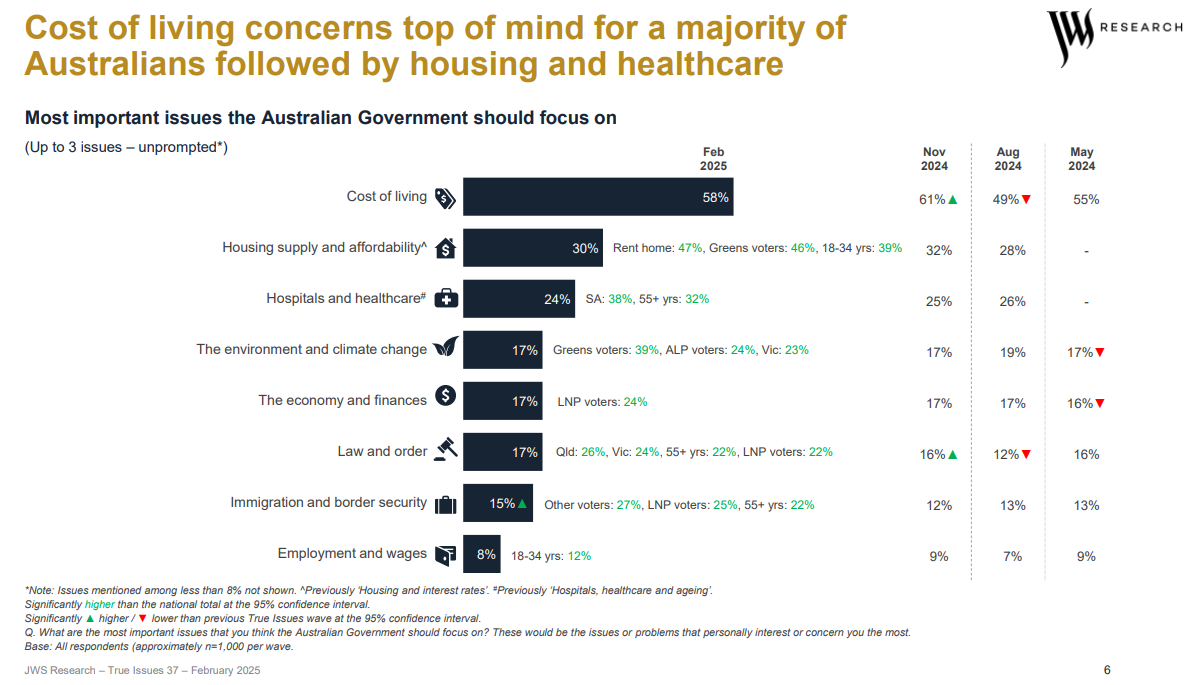
Cost of living is voters’ primary concern. And only 24% of voters polled believe Labor has performed satisfactorily on this issue.
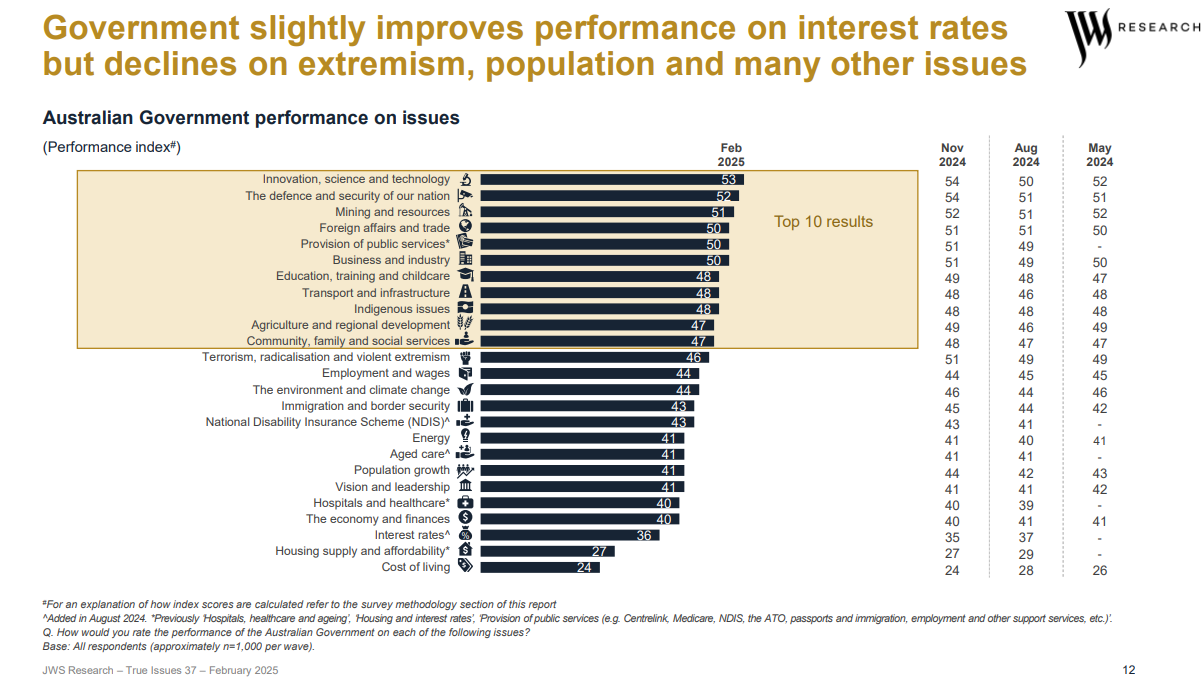
Labor is desperately hoping that Tuesday’s 0.25% interest rate cut eases voters’ concerns.

